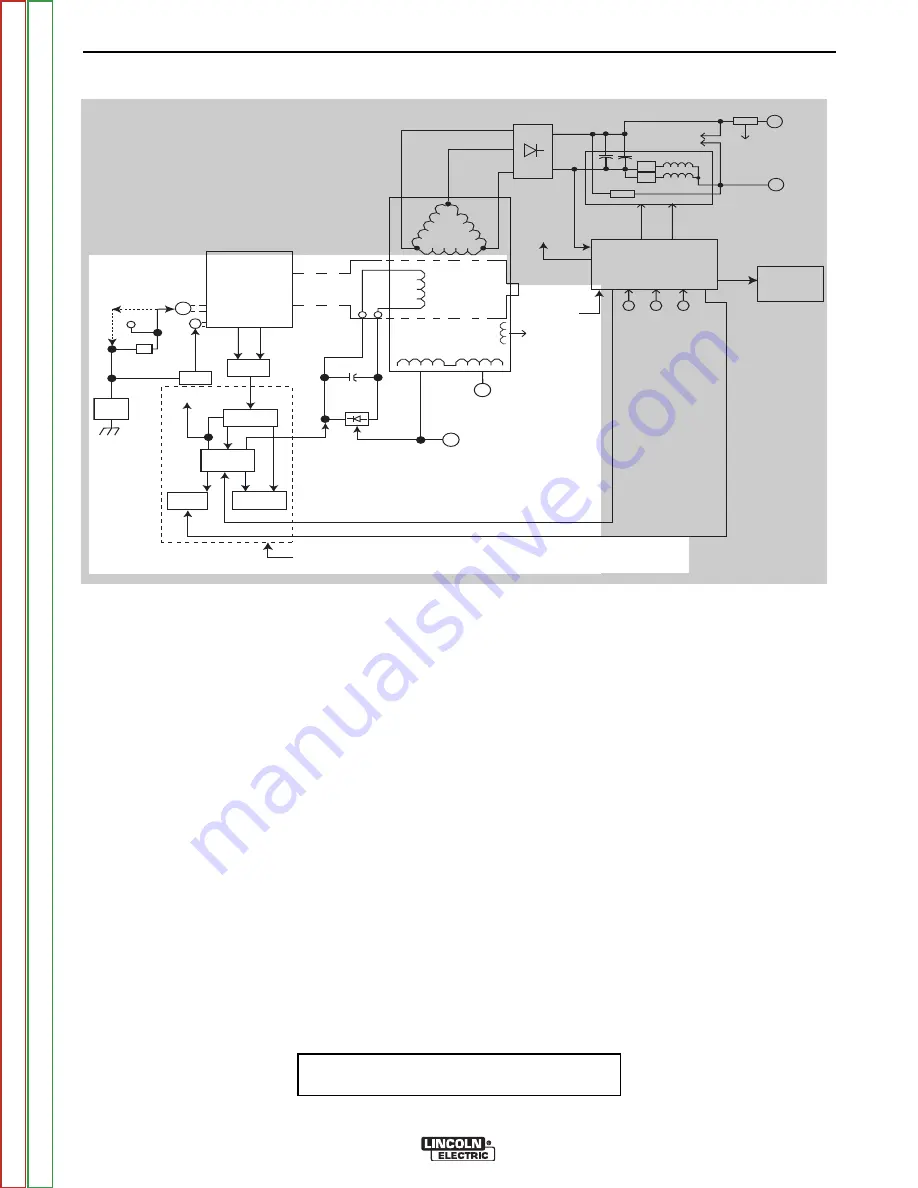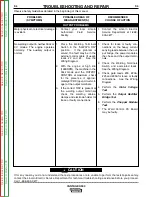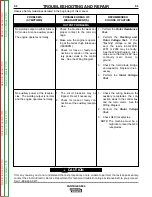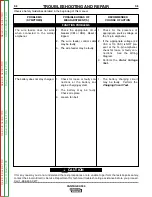
THEORY OF OPERATION
E-2
E-2
VANTAGE® 500
FIGURE E.2 - BATTERY, ENGINE, ROTOR, PULL COIL BOARD
AND PERIPHERAL BOARD (ENGINE PROTECTION
NOTE: Unshaded areas of Block Logic
Diagram are the subject of discussion
GENERAL DESCRIPTION
The Vantage 500 is a diesel engine-driven welding
power source capable of producing 500 amps at
40VDC at a 100% duty cycle. The engine is coupled to
a brush-type alternating current generator. This AC out-
put is rectified and controlled by
Chopper Technology
to produce DC current for multi-purpose welding appli-
cations. The Vantage 500 also provides auxiliary power
of various voltage and wattage levels depending on the
Code number. See the appropriate Wiring Diagram or
Technical Specifications.
BATTERY, ENGINE, ROTOR,
STATOR, PULL COIL BOARD AND
PERIPHERAL BOARD – ENGINE
PROTECTION
The 12VDC battery powers the engine starter motor
and also supplies power to the Pull Coil PC board,
Peripheral PC board and associated circuitry. When the
engine, which is mechanically coupled to the rotor, is
started and running, the 12 VDC battery voltage is fed
momentarily through the pull coil PC board to the rotor
field coil via a brush and slip ring configuration.
This excitation or "flashing" voltage magnetizes the
rotor lamination. This rotating magnet induces a volt-
age in the stationary windings of the main alternator sta-
tor. A 120VAC supply from the stator is fed through a
rectifier and filter to supply the rotor with a steady DC
voltage. The stator also houses a three-phase weld
winding, a 120/240VAC single-phase auxiliary winding,
In some codes, there is also a 3 phase auxiliary and a
separate 120VAC and/or a 42VAC wire feeder power
supply that is routed to the 14 pin MS typel Connector.
The engine alternator supplies charging current for the
battery circuit. The Peripheral board monitors the
engine sensors and will shut the engine off in the event
of low oil pressure, engine over temperature, malfunc-
tion of the engine’s alternator system or a low fuel con-
dition. The idler solenoid, if present, is mechanically
connected to the engine’s throttle linkage. If no welding
or auxiliary current is being drawn from the Vantage
500, the Pull Coil board activates the idler solenoid,
which then brings the engine to a low idle state. When
output current is sensed (either weld or auxiliary), the
Weld Control PC board deactivates the idler solenoid,
and the engine goes to high RPM.
ENGINE
ROTOR
STATOR
AUXILIARY
WINDINGS
W
E
L
D
W
I
N
D
I
G
MECHANICAL
ROTATION
ALTERNATOR
OUTPUT
CONTROL
MODE
SELECT
SWITCH
SLIP
RINGS
ARC
CONTROL
WELD
CONTROL
BOARD
VOLTMETER
AMMETER
42 VAC and 120VAC
to 14 Pin Amphenol
for Wire Feeder
(No 120 VAC on EURO Models)
THREE-PHASE
RECTIFIER
+
+
+
+
__
__
TO WELD
CONTROL
BOARD
_
_
START
BUTTON
+
BATTERY
ON
STARTER
+12 VDC
RUN
ENGINE
SENSORS
OIL
PRESSURE
WATER
TEMP.
PERIPHERAL
PCB
PULL
COIL
PCB
+12 VDC
RUN
FUEL
SOLENOID
PULL
HOLD
FLASHING
IDLER
SOLENOID
LOW IDLER SIGNAL (TO SUPPLY PULL VOLTS)
HOLD VOLTS FROM CONTROL PCB
25
•
(COLD)
120 VAC
RECEPTACLES
(Not on EURO Machnes)
AC RECEPTACLES
Various combinations of
1Ø and 3Ø Outputs.
See Techincal Specs.
IGBT
IGBT
CHOKE
R4-50
•
2-POWER MODULES
SHUNT
TO
CONTROL
PCB
AUX. POWER
USE SENSING
+12VDC
RUN
80 VDC
PWM
SIGNAL
PWM
SIGNAL
120V
AC
160VDC
120VAC
PULL
RUN/STOP
SWITCH
* On some codes the Peripheral Board, Pull Coil Board, Idler Solenoid & Fuel Solenoid are
replaced by an Electronic Governor Control module and components. See Wiring Diagram.
Return
to
Section
T
OC
Return
to
Section
T
OC
Return
to
Section
T
OC
Return
to
Section
T
OC
Return
to
Master
T
OC
Return
to
Master
T
OC
Return
to
Master
T
OC
Return
to
Master
T
OC
















































